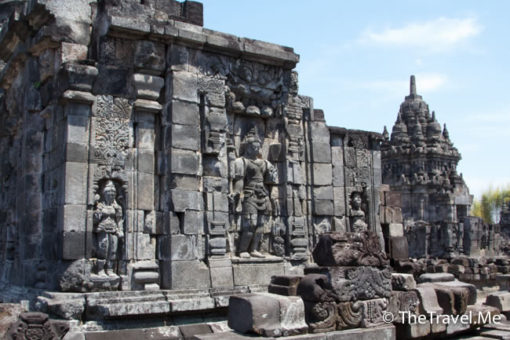
Sewu the ruin for Manjusri
Candi Sewu is an eighth century Mahayana Buddhist temple located 800 metres north of Prambanan in Central Java, Indonesia. Candi Sewu is the second largest Buddhist temple complex in Indonesia right after Borobudur.

Candi Sewu is an eighth century Mahayana Buddhist temple located 800 metres north of Prambanan in Central Java, Indonesia. Candi Sewu is the second largest Buddhist temple complex in Indonesia right after Borobudur.
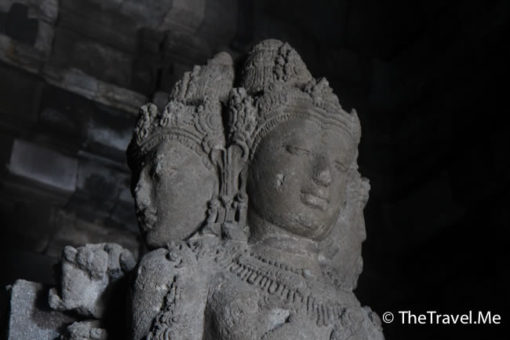
Prambanan is located in Central Java of Indonesia, There were once 240 temples standing in this Shivaite temple complex, either big or small. The majority of them have deteriorated; what is left are only scattered stones.

Prambanan is a Hindu temple compound in Central Java of Indonesia, the temple compound is located approximately 17 kilometres northeast of the city of Yogyakarta. There were once 240 temples standing in this temple complex, but only 8 main temples and 8 small shrines in the inner zone are reconstructed today.
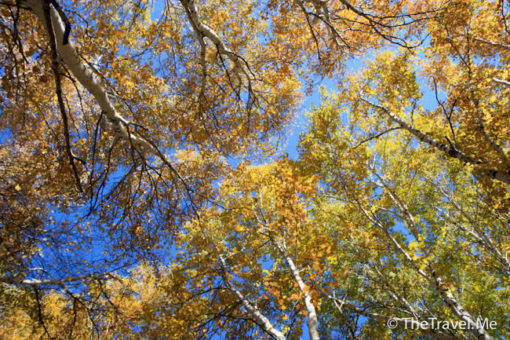
Ulan Butung (Mongolian: ᠤᠯᠠᠭᠠᠨ ᠪᠤᠲᠤᠩ; Chinese: 烏蘭布統) is a sumu in Chifeng (赤峰), Inner Mongolia, China. Sumu (ᠰᠤᠮᠤ) is a type of administrative district used in Mongolia. The white birch forest is one of the popular tourist attractions in Ulan Butung.

Ulan Butung (Mongolian: ᠤᠯᠠᠭᠠᠨ ᠪᠤᠲᠤᠩ; Chinese: 烏蘭布統) is located in Chifeng (赤峰), Inner Mongolia, China. The majority of the population in Ulan Butung are Mongols, Mongol is a nomadic tribe, herding is the most common scene.
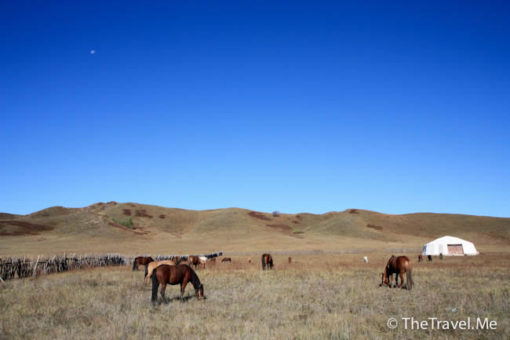
Ulan Butung (Mongolian: ᠤᠯᠠᠭᠠᠨ ᠪᠤᠲᠤᠩ; Chinese: 烏蘭布統) is located in Chifeng (赤峰), Inner Mongolia, China. In 1690 the Battle of Ulan Butung between Qing and Dzungar forces took place in Ulan Butung, there was blood behind such an idyllic scene.
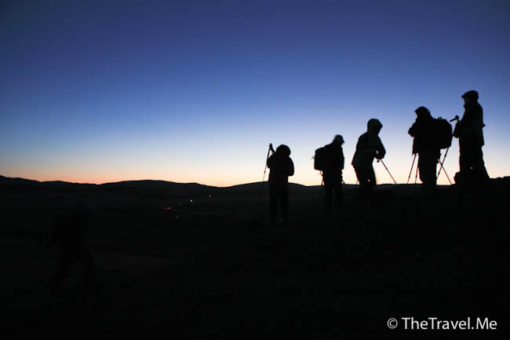
Ulan Butung (Mongolian: ᠤᠯᠠᠭᠠᠨ ᠪᠤᠲᠤᠩ; Chinese: 烏蘭布統) is a sumu (ᠰᠤᠮᠤ) of Inner Mongolia, China. In Mongolian, ‘Ulan’ means ‘red’, while ‘Butung’ means ‘altar’, so Ulan Butung actually means ‘red altar’.
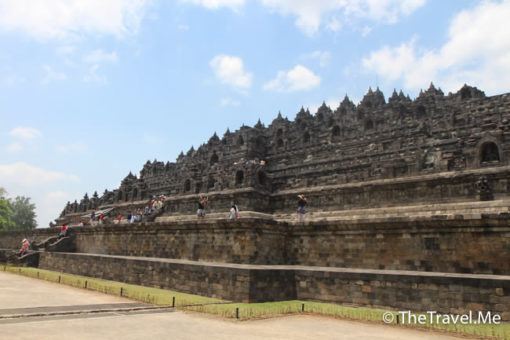
Borobudur (Javanese: ꦕꦤ꧀ꦣꦶꦧꦫꦧꦸꦣꦸꦂ) is a 9th-century Mahayana Buddhist temple in Central Java, Indonesia. The temple lay hidden for nearly a thousand years under layers of volcanic ash and jungle growth, worldwide knowledge of its existence was sparked in the 19th century, but many mysteries still remained.
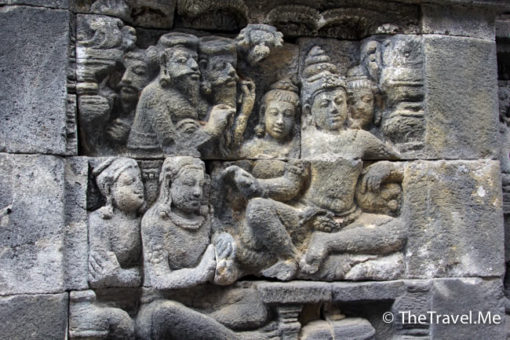
Borobudur (Javanese: ꦕꦤ꧀ꦣꦶꦧꦫꦧꦸꦣꦸꦂ) is a 9th-century Mahayana Buddhist temple in Central Java, Indonesia. Borobudur is about 40km from the town of Yogyakarta, it is the single most visited tourist attraction in Indonesia, and also the world's largest Buddhist temple.

Fuxi Temple (Chinese: 伏羲廟) is located in Tianshui (天水), Gansu (甘肅), China. It was the 14th day of the first month in the lunar calendar when Choumeizai visited there, the locals were still celebrating lunar new year.
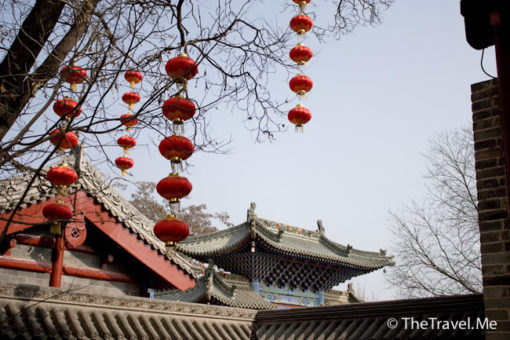
Fuxi Temple (Chinese: 伏羲廟) is located in Tianshui (天水), Gansu (甘肅), China. The construction of Fuxi Temple began in Yuan (元) Dynasty (14th century), but most of the structures nowadays were built in Qing (清) Dynasty (18th century).

Xianrenya (Chinese: 仙人崖) is part of Maijishan (麥積山), which is located in Tianshui (天水), Gansu (甘肅), China. The construction of Xianrenya began in the 5th century, but most of the temples we see nowadays were built in the Qing Dynasty (17th century).
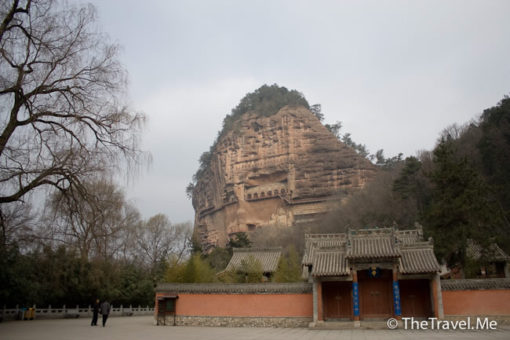
Maijishan Grottoes (Chinese: 麥積山石窟) are a series of 194 caves cut in the side of the hill of Majishan in Tianshui (天水), Gansu (甘肅) , China. Maijishan is a mountain formed of purplish red sandstone that literally translates as ‘Wheatstack Mountain’.
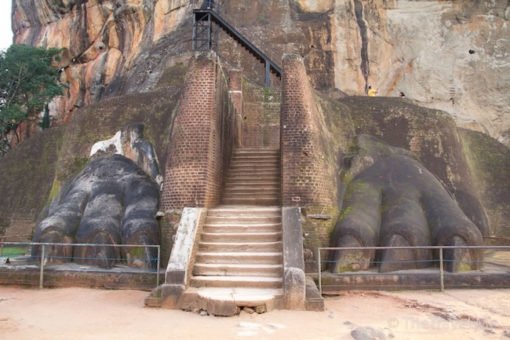
Sigiriya (Sinhala: සීගිරිය; Lion Rock) is an ancient rock fortress located near the town of Dambulla (දඹුල්ල) in Sri Lanka. The name Sigiriya refers to a site of historical and archaeological significance that is dominated by a massive column of rock nearly 200 metres high.
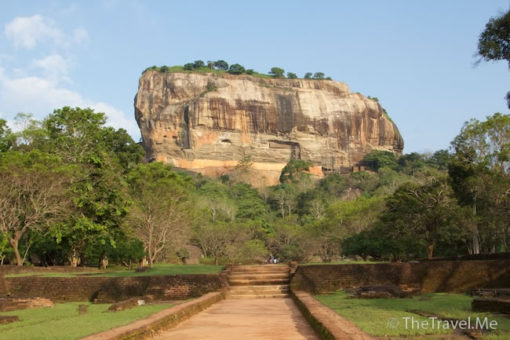
Sigiriya (Sinhala: සීගිරිය; Lion Rock) is an ancient rock fortress located near the town of Dambulla(දඹුල්ල) in Sri Lanka. Sigiriya was abandoned around the 5th century. It was used as a Buddhist monastery until the 14th century, and has now become a famous tourist attraction.

Longshui(Chinese: 龍水峽) is a gorge located in Xiannüshan (仙女山), Chongqing (重慶), China. The gorge is around 5km long and 500 meters at the deepest, the landform is incredibly gorgeous.
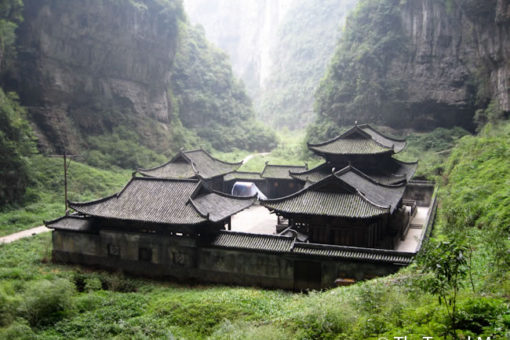
The Three Natural Bridges (Chinese: 天生三橋) are a series of natural limestone bridges located in Xiannüshan (仙女山), Chongqing (重慶), China. They lie within the Wulong Karst National Geology Park, itself a part of the South China Karst-Wulong Karst UNESCO World Heritage Site.
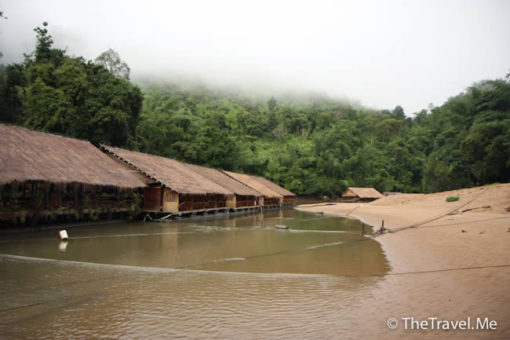
This hotel is located at the upper reaches of ‘River Kwai’ (Khwae Yai River; Thai: แม่น้ำแควใหญ่), which is surrounded by brushy jungle, you need to take a speedboat to get there. The hotel is called ‘Jungle raft’ and is actually built on a raft, as its name suggests.
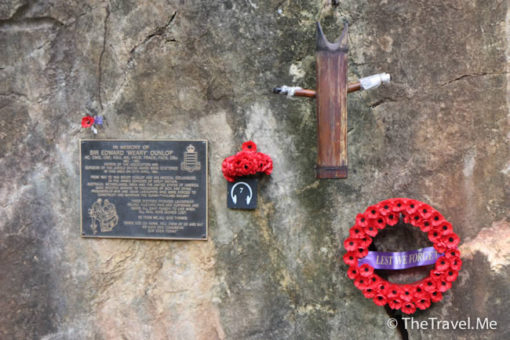
The Burma Railway (Thai: ทางรถไฟสายมรณะ), also known as the Death Railway, is a railway between Thailand, and Burma, it is said that more than 100,000 people died during the construction of this railway. Hellfire Pass (ช่องเขาขาด) is noted for the harsh conditions and heavy loss of life.
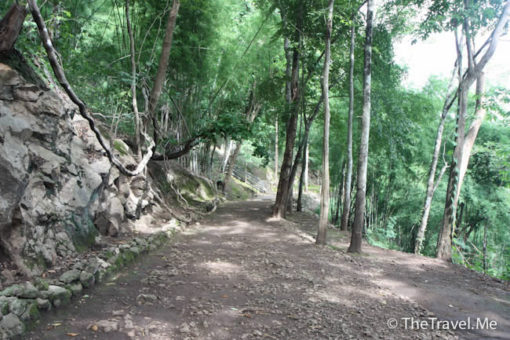
The Burma Railway (Thai: ทางรถไฟสายมรณะ), also known as the Death Railway, is a railway between Thailand, and Burma, built by the Empire of Japan from 1940–1944 to supply troops and weapons in the Burma campaign of World War II. For Choumeizai, Hellfire Pass (ช่องเขาขาด) is amongst the most impressive in the whole Burma Railway.